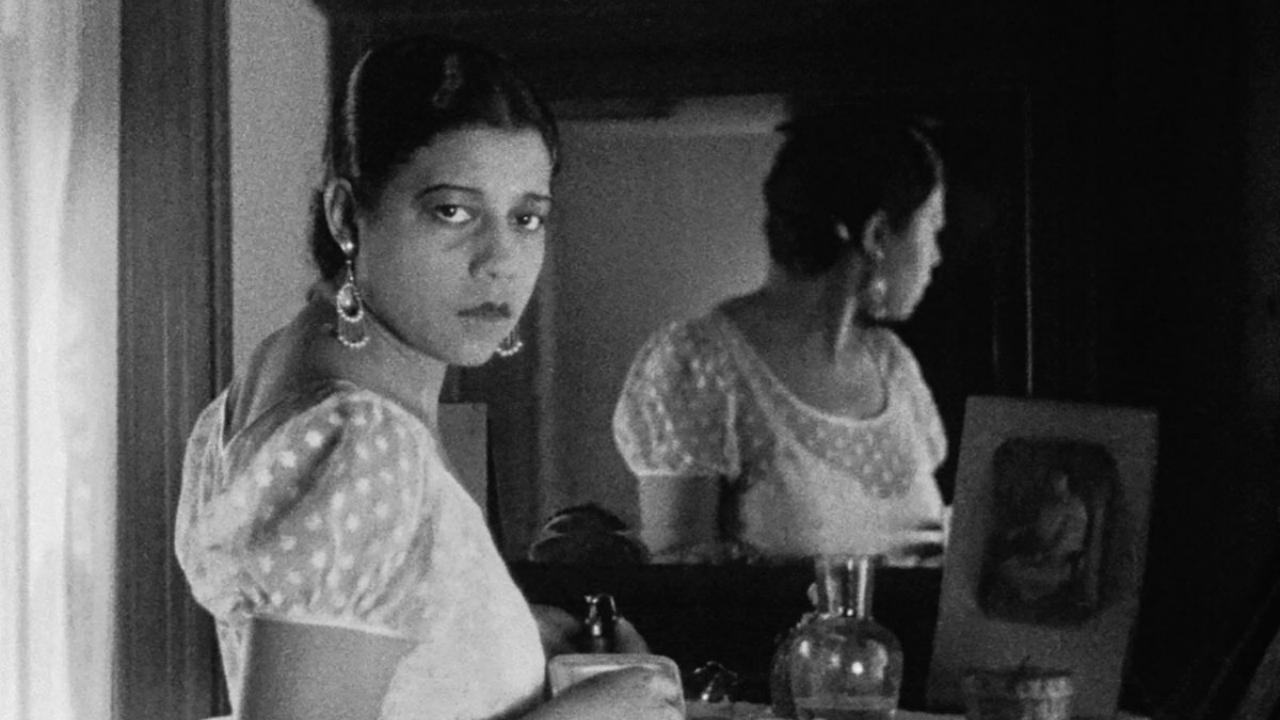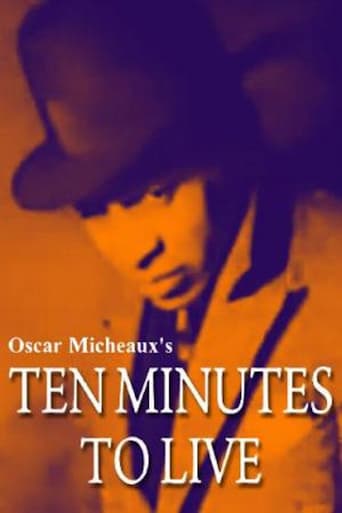



just watch it!
After playing with our expectations, this turns out to be a very different sort of film.
View MoreWhile it is a pity that the story wasn't told with more visual finesse, this is trivial compared to our real-world problems. It takes a good movie to put that into perspective.
View MoreIt really made me laugh, but for some moments I was tearing up because I could relate so much.
View MoreLike an episode of 'Police Squad' this film immediately establishes the level of incoherence it intends to maintain throughout by announcing in its main title that it's drawn "from three short stories" before just moments later posting a Producers Note listing the two "short stories of Negro night life in Harlem" from which it says its been adapted.Having made some reasonably competent silent films, poor Oscar Micheaux is plainly finding sound a serious millstone around his neck, since the dialogue is often almost inaudible and he goes to impressive lengths to get round this obstacle with extensive use of captions and notes; even making one of the characters a deaf mute so he can write down his dialogue rather than speak it. No matter. It's only 58 minutes long, is full of wonderful period detail and the frequent shot mismatches, captions like "WITHIN THE HOUR" to propel the narrative and the incongruous use of Beethoven's 5th on the soundtrack give it a certain 'nouvelle vague' vitality.
View More"Ten Minutes to Live" was one of the first Oscar Micheaux films to emerge in modern times; it was first discovered by AFI in the 1970s. At that time, very little else of Micheaux was known to exist, and at the time no modern film scholar had seen anything like it, nor was it generally known that anything like it had been made at all. At the time, "Ten Minutes to Live" seemed so unique and out of the ordinary that such critical notices as were written tended to be charitable. Nevertheless, those who then saw the one, terribly battered print of "Ten Minutes to Live" weren't sure what Micheaux was up to; whether it was some kind of art film or some species of genre that they did not recognize. Fast forward four decades and we know a lot about Micheaux and the kinds of films that he made, and "Ten Minutes to Live," in that context, has suffered badly. It is clear now that the film is a failed narrative; in fact, two narratives drawn from an alleged short story collection entitled "Harlem After Midnight." The tales are called "The Faker" and "The Killer" and the front title promises three stories, but the film delivers only two. Perhaps Micheaux' later film "Harlem After Midnight" constitutes the third story not shown here. In any event, Micheaux never published these stories and it is difficult to make out from this film what exactly the narrative was.Time has not brought us a better print, and the one we have shows the telltale intrusions of censorship. In the first story, a fellow who claims to be a wealthy producer or something-or-other turns on the charm with several women. He tells one singer he can only pay her $3.25 a day to appear in a talking picture, and that appears to have been about the daily budget that Micheaux had to make "Ten Minutes to Live." There are so many ellipses and shortcuts that you can hardly tell a story is being told at all, and in the first part it so frequently interrupted by vaudeville acts and cutaways to non-speaking characters that you wonder who is actually participating in the tale told. The dancing, though, is all excellent, if not always shot to the best advantage, and in one scene the girls are crammed into a space so tight that they can barely move. Donald Heywood and his hard-working band are definitely an asset to the picture, even when their music is cut into little bits and shards, or interleaved with snatches of Beethoven symphonies. It is not completely foolproof, however; at one point a musician loses his music off the stand, and in yet another the whole band loses it place in the music, with the violinist diligently leading them back to the head.Despite the front title card's assertion that this is an "All Talking" picture, the second story, "The Killer," is strictly a part-talkie, and plays for most of its length silent. One wonders if this was something Micheaux had made earlier as a silent and merely added to "Ten Minutes to Live" with a few talking scenes added. Overall, as a film it is far more interesting than the first part and contains several beautiful visual touches, but these are mostly in the silent filmed sections. Once the sound returns, conversation is heard while a character, ostensibly in hiding, is seen overhearing and reacting to it -- for a very long time.While "Ten Minutes to Live" is not Micheaux' best effort by a long shot, it is also not his worst, and it would be his weirdest if "Swing!" didn't exist. If you approach it as a kind of arty affair and enjoy the dancing and music, you still might get something out of it. If you try to follow "Ten Minutes to Live" as a conventional story, however, you will get hopelessly lost. Not all actors are credited, and some are here credited incorrectly; some appear to be playing more than one part in the story, and there are lots of silent-style subtitles and letters to make things all the more mystifying.
View MoreLaura Bowman had an extremely distinguished career. She was hailed as "the Negro Ethel Barrymore", performed at Buckingham Palace before Edward VII and appeared in theaters all over Europe. In 1916 she joined New York's first black dramatic company, the Lafayette Players in Harlem and appeared in over 500 productions. Although she didn't make many films, she always made an impression - whether as a conjure woman in "Drums O'Voodoo" (1934) or as a mad doctor in "Son of Ingagi" (1939).She was definitely the most prestigious member in the cast of "Ten Minutes to Live", hence her prominent billing. She played the elderly woman in the very first scene, who tells the lecherous film maker where to find Ida. There are two Idas - I'm not sure which is which but they are both singers in the Libya Club.
View MoreBased on two short stories this is a very dated independent early black talky that was done on the cheap. The camera is essentially nailed to the floor to take in various scenes that advance the story which are inter-cut with scenes supposedly happening in and around a black night club (these appear to have been filmed on location with the camera placed in a rather odd angle). As a movie with a story this film is an absolute snoozer. The cast is uneven and the story really doesn't warrant being told. As a filmed record of the singers and dancers, comedians and musicians that perform its invaluable. These were very talented people doing things that are in their way more impressive than what we see on the stages of Broadway today. That said I really can't recommend this film unless you are interested in performers from the era when this film was made, the plot is uninteresting and the acting is often worse.
View More